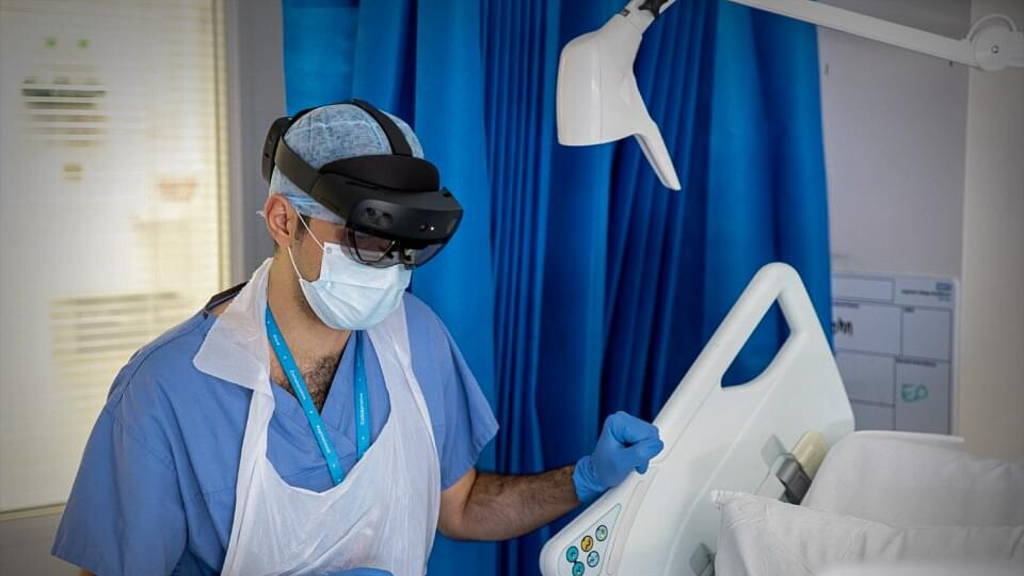How the hospital staff communicates with each other and with patients determines the way the workflows are coordinated. In larger healthcare facilities, this determines the mobilization times for emergency teams, which directly impacts patient outcomes. Communication has always been one of the greatest challenges for hospitals. Pagers were supposed to help solve the problem, but their functionality has become too limited to meet current challenges. They don't enable two-way communication; their range and ability to integrate with other IT systems are limited.
New solutions use mobile phones and additional devices for hands-free communication. Doctors' and nurses' work can be coordinated centrally around specific tasks or within organizational units (wards). Employees can communicate with each other and see their availability status. Patients can call the duty nurse just by using the bedside bell.
Such a solution has been implemented by the UK's Royal National Orthopaedic Hospital (RNOH) and Lehigh Valley Hospital (USA). The system can be operated hands-free thanks to special clips and a mobile app; it works smoothly even when the hospital buildings are scattered over a large area. The implementation of a smartphone-based system allowed both hospitals to improve information exchange, task coordination, cooperation between professionals, and patient experience.
During the COVID-19 pandemic, when hospitals had to, sometimes within a few days, accommodate to treat patients with coronavirus, the system enabled the reorganization and assignment of new roles to new wards and made possible communication between patients and their families. Other benefits include improved workflows and better teamwork.
Video streaming systems
The COVID-19 pandemic led to many other disruptions in hospitals. Due to the epidemiological restrictions, students were not able to participate in medical rounds. Doctors could not travel and join innovative surgeries to help their colleagues or to gain new experience. To maintain the education of students, doctors at London's Imperial College found a simple solution. With virtual reality glasses and video streaming, images from medical rounds can be sent directly to the students' computers. Besides, the system provides access to medical records, diagnostic images, and test results. Students can interact with doctors and ask questions as if they were actually at the patient's bedside.
High-speed internet and good quality cameras are becoming essential equipment for operating rooms. During a complex intracranial vascular implant surgery at Lahey Hospital & Medical Center in Burlington (USA), experienced Canadian specialist could assist surgeons remotely. Cameras in the operating theater allowed the surgeon to follow the procedures in real-time and provide remote guidance. Virtual support during complicated surgeries increases patient safety and enables detailed documentation of all the steps made. If made available in online educational libraries, they become a precious training resource for students and doctors worldwide.
Command centers
The higher the digital maturity of hospitals, the easier it is to manage the workflows and harmonize care procedures. Data collected from different points – also analyzed and displayed in a readable way – illustrate what is happening inside the hospital. Command centers, like those used for space missions or in airport control towers, are becoming increasingly popular in hospitals, where the volumes of data require coordinated processing. On the wall full of monitors, all data are displayed in real-time data: beds occupancy rate, length of hospital stays, medical alarms and notifications, resource occupancy, and staff availability.
In the command centers, which can be located outside the hospital, administrative and medical teams manage the day-to-day operations, coordinate and plan patient care, mobilize care teams when a patient's condition deteriorates. Some of the first hospitals that implemented a hospital command center to manage their patient flow and access data were Johns Hopkins Hospital (USA) and Humber River Hospital (Canada). Their system integrates data from multiple points in the hospital, allowing continuous monitoring. It also uses artificial intelligence systems to identify patients who need special attention because their health may worsen.
Since implementing the command center in 2017, the hospitals have reported better bed management and optimization, increased patient safety, improved hospital infection control, and more effective prevention of medication errors. The capabilities of command centers are quickly growing as data access and interoperability improve. Access to data from electronic medical records makes it possible to apply machine learning algorithms to predict patient health trends.








